You've decided that fruit trees are just what the landscape needs. With space in the front and back yards, the question now is what sort of fruit trees would work best. The good news is there are varieties of trees that work well in a number of climates, and have different needs in terms of sunlight, general care, and other factors.
To help you get started, consider these ten options for fruit trees. You'll find that they are highly likely to be great options for your property, and may even inspire some other ideas of how you can make the space even more inviting and functional.
Nursery Tree
As you begin the search for the right fruit trees, expect to come across discussions of nursery trees. A nursery tree is simply one that begins life in a tree nursery. Many fruit trees that you see offered online are cultivated within the controlled environment that a nursery has to offer.
There are three broad categories for tree nurseries. Retail nurseries offer fruit trees to the general public. The trees may be sold individually or in bulk. Wholesale nurseries only sell trees in bulk, although the nursery may allow a customer to include multiple types of fruit trees in the same order. Last, there is the private nursery, which typically cultivates fruit trees for a specific client.
You will likely be purchasing from a retail nursery. This is especially true if you are planning on adding several types of fruit trees to a residential property. When the plan is to outfit a back garden, retail is the way to go.
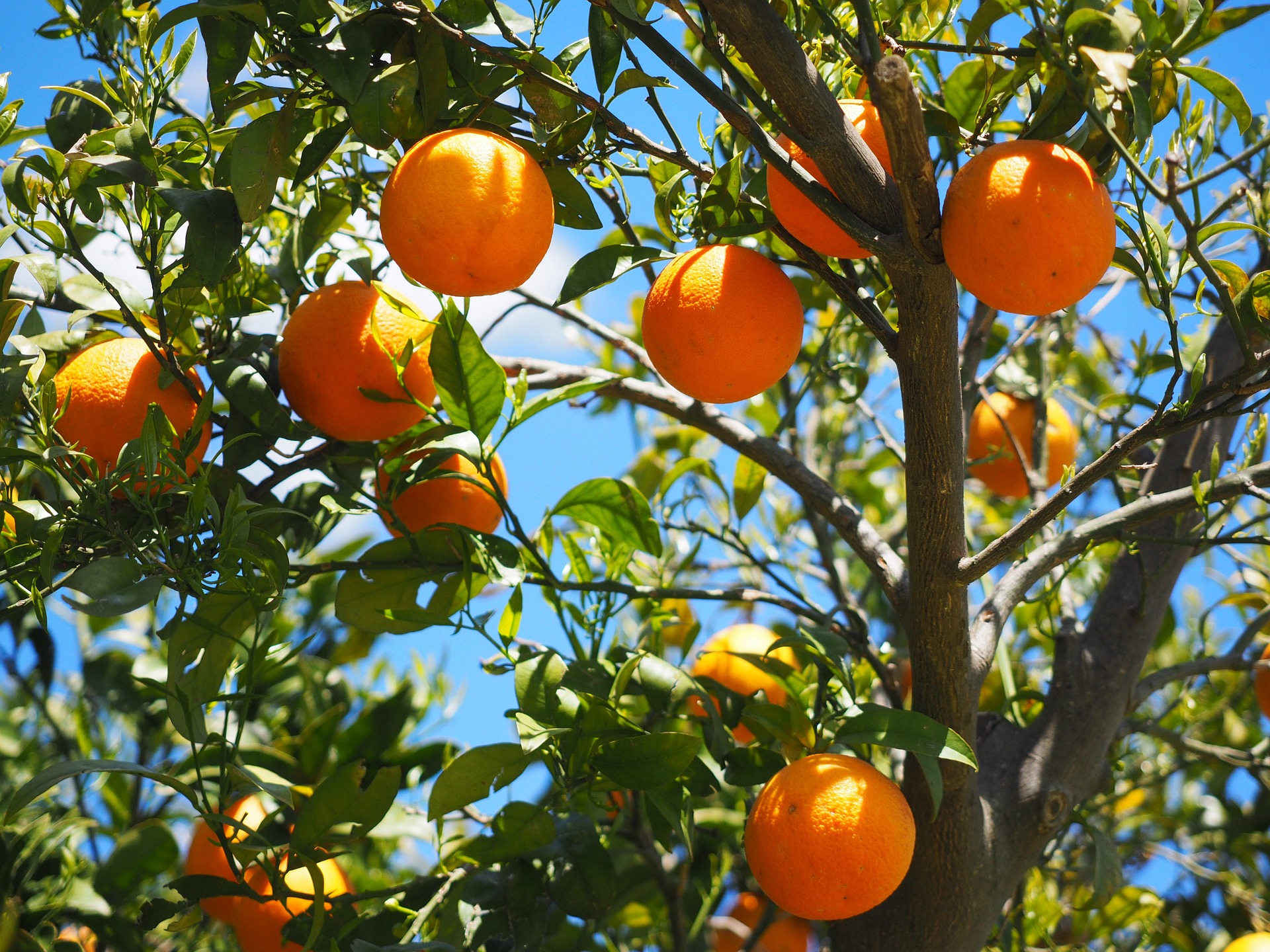
Nectarine Tree
Considered to be in the same family as the peach tree, a nectarine tree will not require much in the way of ongoing care. Full sunlight is best, and the climate should be generally warm and somewhat temperate. Expect the primary harvest to take place in the summer.
In terms of height, the tree may grow to anywhere between 6 ½ to 16 feet (2 to 5 meters). It's best to plant the tree in the autumn or in the summer. An annual pruning is recommended, with a number of experts citing the end of the winter season as the best time.
Mulberry Tree
The mulberry tree is noted for the beautiful foliage, and how it provides an excellent source of shade. As with many trees, full sunlight is the best exposure for this one. You can expect the flowering to begin sometime between June and September. Considering how easy the tree is to grow, don't be surprised if if quickly becomes a focal point of the landscape.
In terms of height, a mulberry tree can grown anywhere between 16 to 50 feet (5 to 15 meters). In general, it's recommended to plant the tree in the autumn, although it is possible to plant in the spring once the ground thaws from the winter. Unlike some other options, this one does not require any pruning. In fact, it's often recommended to allow the tree to grow into its own natural shape.
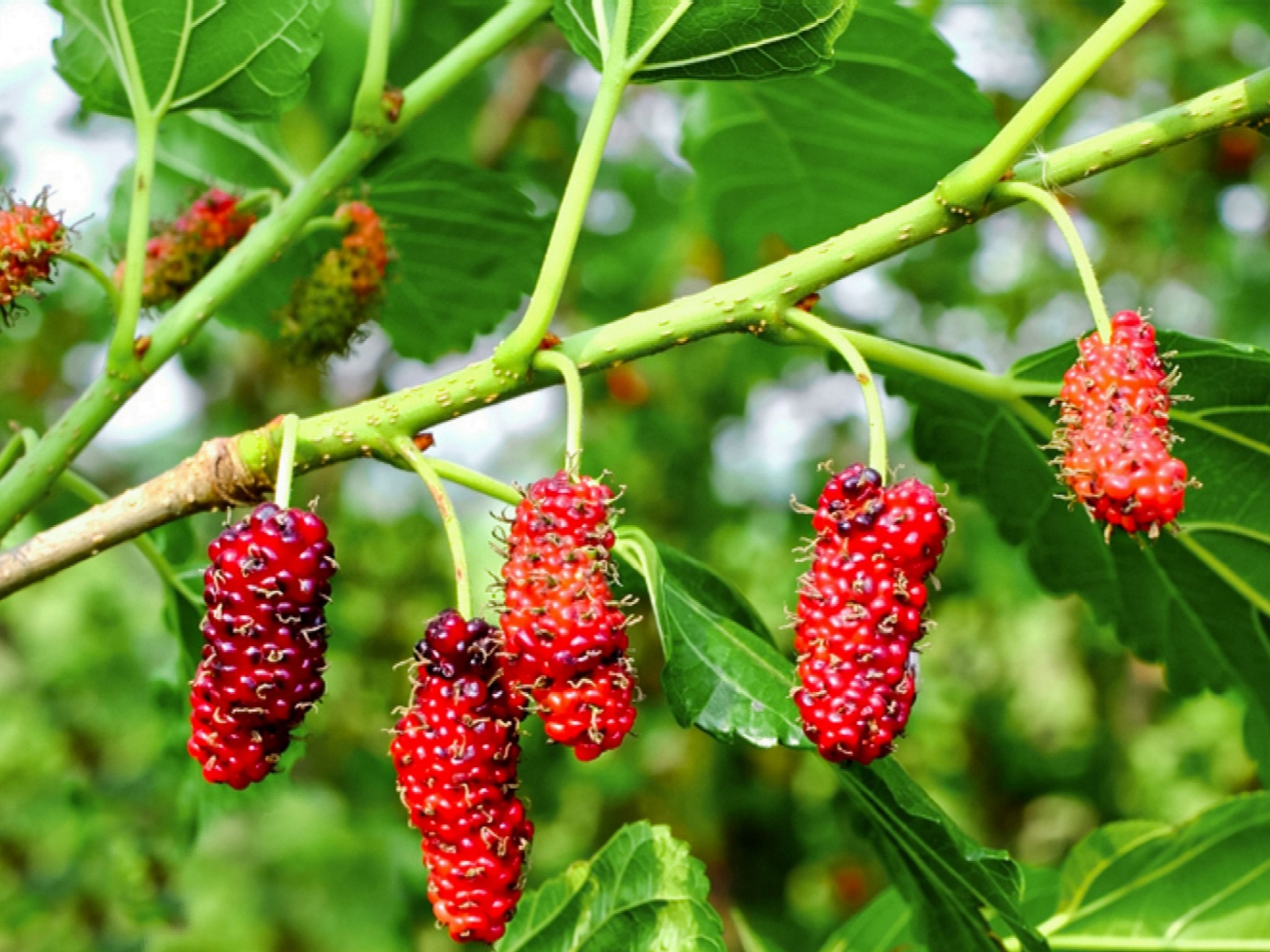
Quince Tree
The fruit of the quince tree is beautiful as well as tasty. You'll find that this tree thrives best with full sun exposure. Expect the flowering to occur in the spring, with the harvest to take place from September to November. Keep in mind that this is a fruit tree known for shedding all or most of the leaves after the harvest.
Your quince tree is likely to grow to a height of around 16 feet (5 m). This is another tree that should be planted in the autumn. While full sun is great for most of the day, the quince tree does tolerate partial shade for a several hours without any ill effects. Unlike some fruit trees, it will do well in many types of soil. As to pruning, this is something to consider once or twice a year. You may also need to thin the fruit in order to allow what remains to fully mature.
Plum Tree
With several varieties to choose from, there's sure to be a plum tree that's ideal for your grounds. Full sun exposure is ideal for this type of fruit tree. As with a number of trees, it will shed all or most of the leaves once the growing season is completed.
You can expect most varieties to reach a height of around 16 to 20 feet (5 to 6 m). The flowering will commence around March and may last into April. You can expect the plums to be ready for harvesting between July and September. So plant in the autumn, and be prepared to water frequently until the first frost happens. Pruning should only be done with care, and after determining that it's needed. In general, you're not likely to prune the tree more than once per growing season.
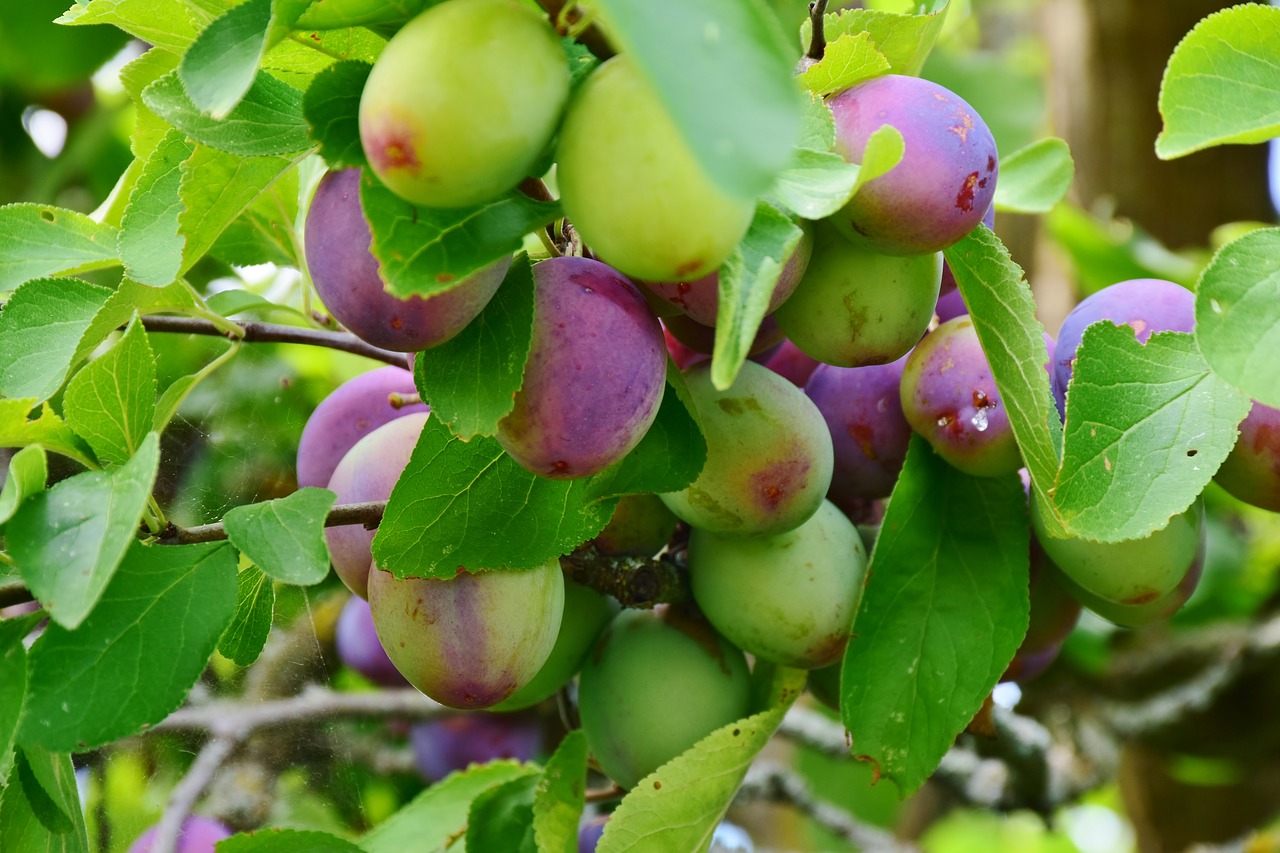
Damson Tree
The damson tree is a particular type of plum tree that you will want to think about adding to your grounds. What tends to set it apart from other plums is the amount of water found in the fruit. Damsons have less, which makes them a great choice for baking and cooking. As with other varieties of plum trees, it does require full sun. You can also expect the tree to reach a height of 16 to 20 feet (5 to 6 m).
Unlike some other types of plum trees, this one can be planted in the autumn or in the spring. The key is to avoid planting when the temperature has dropped significantly, or when the ground is still somewhat frozen. Pruning should also be done on an as-needed basis rather than some set pattern throughout the growing season. Expect the harvest to take place between July and September.
Cherry Tree
From tart to sweet, the cherry tree is available in a number of varieties. One thing that you can depend on is that these trees often provide an abundant harvest. That's great, since it's easy enough to prepare cherries for canning or even freezing for use in pies and other desserts later.
Full sun is a must for just about all types of cherry trees. They may grow to a height anywhere between 20 and 50 feet ((6 to 15 meters). The flowering usually begins in April, with the harvest taking place between May and July. Autumn planting is generally recommended, although it is possible to plant in the spring. If the latter takes place, be prepared to provide the trees with more frequent watering.
Pruning a cherry tree should be done infrequently and with care. A good rule of thumb is to not be concerned with cutting back limbs, but pruning only to remove any dead or broken branches.
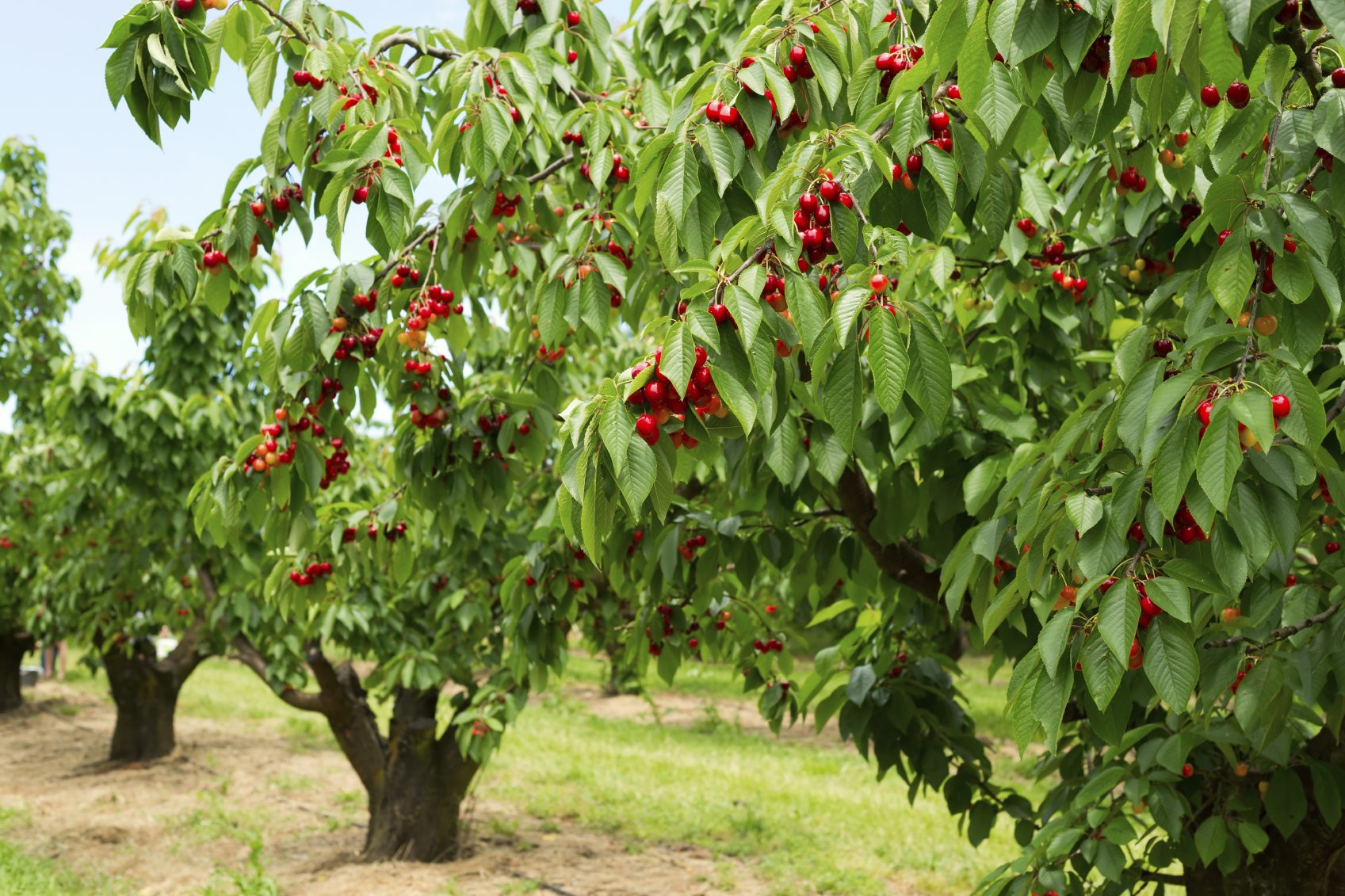
Apricot Tree
The apricot tree tends to require a little more attention than some other fruit trees, but the tasty fruit that results makes it worth the effort. The extra attention is offset by the fact that the trees tend to be sturdy and take root with ease. Once it matures, the tree will need less attention.
Plant the tree so that it will receive full sunlight. Over time, it will grow to anywhere between 16 to 20 feet (5 to 6 m). You should see the first flowers emerge sometime in March, with the fruit beginning to bear during July and August. Remember to plant the trees in autumn, and make sure you leave at least five feet between them. That provides space for the roots to spread. Avoid too much watering, and only prune if the need arises.
Peach Tree
Peaches are wonderful for consuming in a variety of ways. The fruit of the peach tree is great for jams, jellies, pies, and cobblers. They also do well when blanches and frozen for later use. Keep in mind that trees of this type do need some care in order to ensure that the fruit will be the best from season to season.
A warm and temperate climate is best for the peach tree. Plant so that they will receive full sunlight for most of the day. You can expect most varieties to reach a height between 6 ½ to 16 feet (2 to 5 meters.
Like many fruit trees, the peach tree will lose all the leaves after the harvest. Most varieties bear fruit in the late spring and into the summer months. Thinning the fruit may be necessary in order to ensure a good harvest. In terms of pruning, that's best done after the harvest has completed, but to remove any broken or dead limbs when necessary.
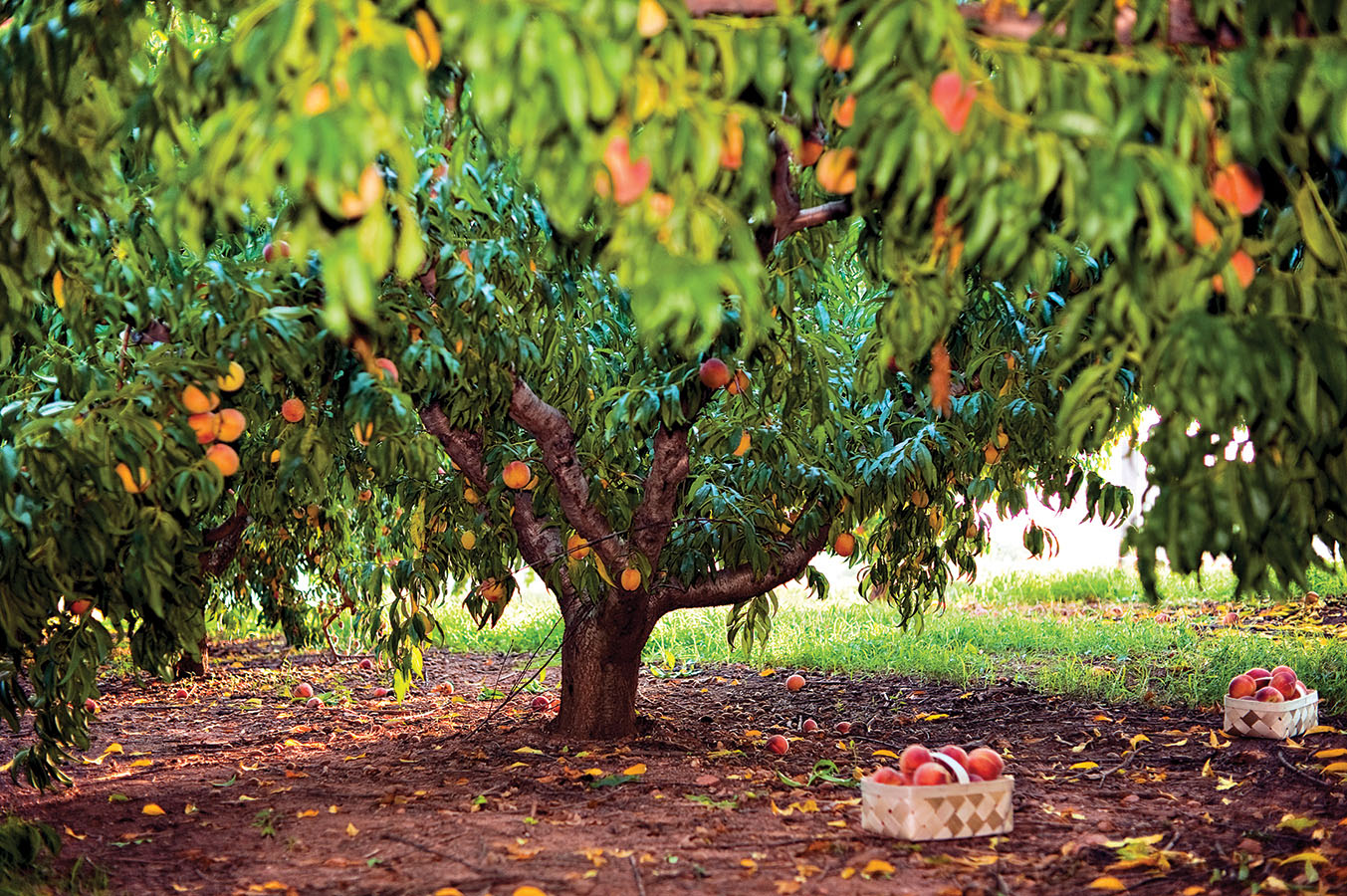
Apple Tree
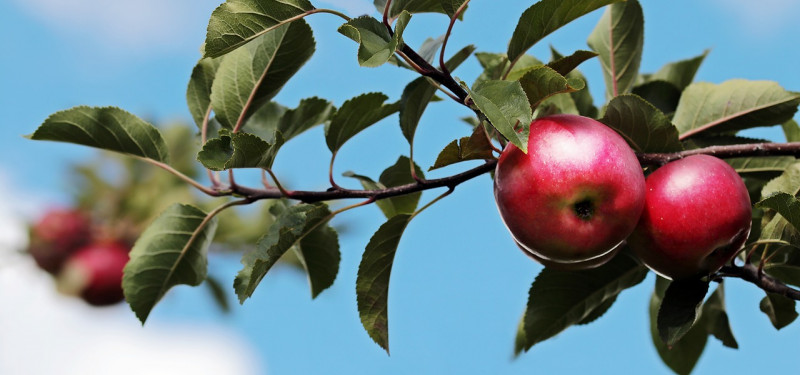
Who doesn't love apples? This versatile fruit is available in a number of varieties, with some being best for canning, freezing, baking, and other applications. The apple tree requires full sun exposure, and thrives in temperate climates. As with many fruit trees, the apple tree will lose its leaves after the harvest season is over.
Depending on the variety, an apple tree may grow anywhere between 16 to 32 feet (5 to 10 m). Expect the flowering to begin in spring and continue into the early summer, depending on the variety. As with peach trees, you may need to thin the apples in order to ensure those remaining reach their full potential in terms of size and taste.
While autumn is the best time to plant apple trees, it can be done during the spring and even into the summer. You want to avoid planting when there's frost, or during the hottest months. Do water regularly during the first two years, but make sure the soil remains well drained. Remember that you will need more than one tree, since these types are not self-pollinating.
What will you choose for your property? Consider adding several types of trees so there is always an abundance of fresh fruits for your enjoyment. Consider the climate, the amount of care needed, and the type of soil present. With a little planning, you can look forward to ample harvests in the years to come.
Do consider the timing for the fruit tree delivery as well. You want the trees to arrive in time for the planting season. Hopefully, you will acquire all the resources needed while the trees are on the way. When they do show up, you’ll have everything on hand to plant them immediately and enjoy watching your garden take on a new look and new life.
Fruit-trees.com uses only the cleanest stocks available for propagation and provides detailed information about planting and care, in order to give your fruit trees the greatest opportunity for success.
Visit fruit-trees.com now to pre-order your new trees for spring.





